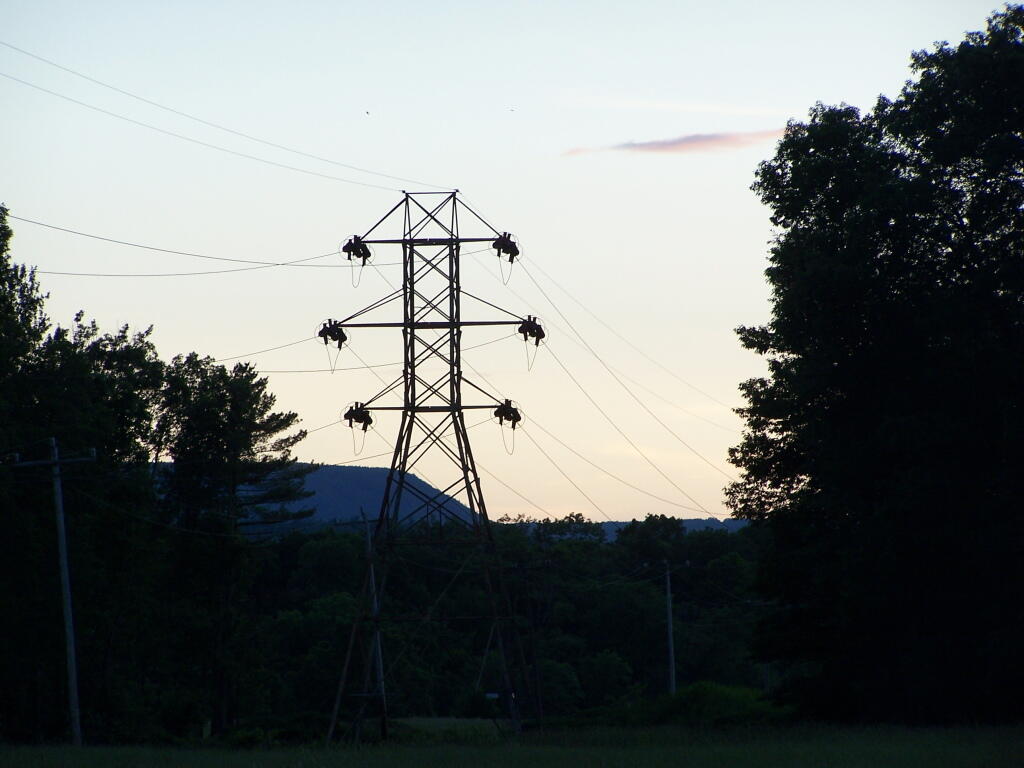I was reading one of those anti-renewable energy pieces that seems to make a lot of hay on the internet these days, especially by conservative people. The popular theme is the toxic and problematic nature of disposing of solar panels, wind mill blades and lithium ion batteries. The straw-man argument used by those opposed to florescent lighting a few years back – claiming that if you break a bulb in your home and then you have to call in the hazardous waste team to clean up the tiny amount of toxic mercury vapor in the bulbs. This is when most people when a bulb burns out they toss it in the trash, which is smashed in a garbage truck or burnt in their burning barrel.
Solar panel disposal is an issue — one worth serious consideration when it comes to the context of large solar farms. Steel mounting equipment and even the aluminum frames are quite recycable, and things like the solar panel junction boxes and microinverters can be moved from panel to panel and have a fairly long life-span. Most panels are expected to last for 20 plus years, although some will inevitably get broken or destroyed before then. Recycling is great, and it’s good to keep the cadmium infused glass out of landfills and incinerators, and therefore out of the environment, but compared to wire, transformers, and the aluminum frames it’s relatively small waste stream compared to what ordinary households throw away over a similar time period. Cadmium is a heavy-metal pollutant, but remember for many years, most Nickel-Cadmium batteries were simply tossed in the trash then burned or landfilled. Recycling is great, but most waste is just tossed in the bin. Likewise, millions tons of leaded-glass from old television sets and computer monitors for generations has been smashed in the back of garbage trucks, mixed with food scraps, plastic bags and bottles, sent to landfills or burned in incinerators. Some are blasted by kids with their shotguns out back and dumped into gullies. Toxic waste from discarded televisions over the past quarter century far outstrips what will ever come from the solar industry. But recovery of damaged or worn out solar panels is worthwhile, especially if it can help keep toxins out of the environment and recover materials that would otherwise be mined.
Windmill blades are kind of a similar issue. They are composite material with lots of plastics and binder to make them lightweight and strong. Their mixture of composites makes them difficult to recover, as many nonferrous metals. So when wind mill blades are damaged or taken out of service, they are generally chopped and land-filled, although some places are starting to recycle them for aggregate for road building at landfills and other locations, including roads to service wind turbines. Turbine blades, pulverized are likely to be good material for building and fill, as they are stable and unlikely to rot. This is similar to how most cities and highway banks are built out of brick and concrete rubble from demolished buildings. If this sounds like a crude way to use this waste stream, remember this is the same way most municipalities recycle glass bottles — crush them and use them for aggregate for road building at landfills and other places. In America, most buildings when they are taken via eminent domain, they demolish them, with the material is smashed to rubble, and hauled in big trucks to dumping grounds. While some parts of discarded buildings are recycle like large pieces of scrap metal — most of buildings are crushed and hauled off to landfills. Regardless, most wind turbines are expensive, maintained, profit-generated machines that are expected to be used for 20 year or longer before discarded compared to most other things in contemporary life.
Lithium ion batteries are another issue that has gotten a lot of attention lately. People correctly identify the concerns about lithium mining for battery production, although most lithium mined and discarded these days doesn’t go into batteries for cars or renewable energy. Lithium ion salts are a core ingredient of the electrolytic in lithium batteries, the paste that controls and manages the store of electrons between the aluminum and copper plates in lithium ion batteries. The amount of lithium in any one cell is tiny — it’s a very thin but critical layer in the electrolyte of the battery. Far more batteries is copper and aluminum, which are very worthwhile for recycling. But electric cars and large battery storage systems used in off-grid homes and even on-grid homes have hundreds if not thousands of these cells, which means there can be hundreds of pounds of aluminum and copper in these thin plates, and a few dozen pounds of lithium in the electrolyte. Recycling right now for these batteries is somewhat difficult – as they are non standardized but it’s bound to pick up once more are being scrapped, just like what happened with lead acid batteries. Recovering aluminum and copper sheet from lithium ion batteries is definitely possible and it avoids risk of landfill fires. And probably the lithium ion electrolyte should be recovered too. People may throw in the garbage many a cellphone and other small button cell batteries but I expect the majority of large lithium ion batteries in cars and large electrical storage systems will be recovered.
All this talk of renewable energy waste ignores all the waste generated through conventional methods of electricity and fossil fuel production. Coal produces enormous amounts of waste when it’s mined with ash from the combustion process and spoils from removing soil and rock to get the coal. Oil and natural production produces all kinds of residues and drilling mud that have been disposed of in landfills, and produced water — some of which is mixed with toxic chemicals. Not to mention asbestos in legacy power plants, along all the specialty metals, concrete, and other materials consumed and disposed during it’s operation and there after. Nuclear wastes, from nuclear power plants are particularly problematic with their disposal, to say nothing about the of the risk of accidents. It is a legitimate comparison to add up wastes produced per kilowatt of energy produced, and that’s something that should be considered holistically. But remember, carbon dioxide isn’t a free waste to get rid of, even if right now it’s going up into the atmosphere and is bound to cause environmental problems in the future.
Solid waste disposal might be a sexy emotion issue with renewable energy, but it’s a distraction over some serious environmental concerns about renewable energy facilities, especially those built on farm land or wooded areas outside of cities. Waste management and resources consumed by renewable energy projects is a serious concern, but far bigger is the issue of land permanently or long-time consumed exclusively for the use of renewable energy facilities – be them wind or solar. While wind might be compatible to a large degree with agriculture — wind turbines don’t effect farm operations to that large of a degree, if their access roads are properly designed, and they don’t care about farm smells or impact most wildlife outside of a certain number birds, they do have visual impacts and the flickering light they can be problematic. Industrial solar, with their massive solar farm foot prints, can be a bigger issue — planting pollinator friendly species on the ground might be nice, but chain link fences, massive arrays constructed on steel, hundreds of acres upon acres of panel, really distract from rural character and take away from lands that could be forested or farmed. Wild, rural landscapes consistent with a wide variety of habitat, that could be forever lost by urbanization for renewable energy projects.
I am not saying that we shouldn’t build renewable energy projects, or consider the materials and waste considered by renewable energy projects. It’s not wrong to object to renewable energy projects if they generate an enormous amount of waste or consume enormous amounts of rare minerals that are mined in ways that damage the environment. Impacts on total land use need to be taken into context — you can’t just say, animal agriculture is bad — and renewable energy is good, so let’s buy out the farms. Not every project is good or bad. But thoughtful reviews need to be made, there can’t be too much boosterism by either either renewable energy or oil and gas proponents. It’s not bad to say no, for the public’s voice to be heard and a thoughtful debate on projects. Society can’t afford another Robert Moses of renewable energy, but instead we have to accept many projects will be rejected based on community concern. But NIBMYism alone can’t stop all projects, just because a community doesn’t like but bad projects shouldn’t be permitted.
My opinion is that renewable energy projects deserve significant environmental review, just like any new generating facility. The larger the environmental impact, the bigger the mitigation and review needed. Just because we are facing a climate crisis, doesn’t mean we should ignore environmental impacts.


